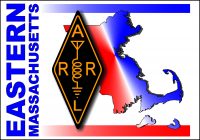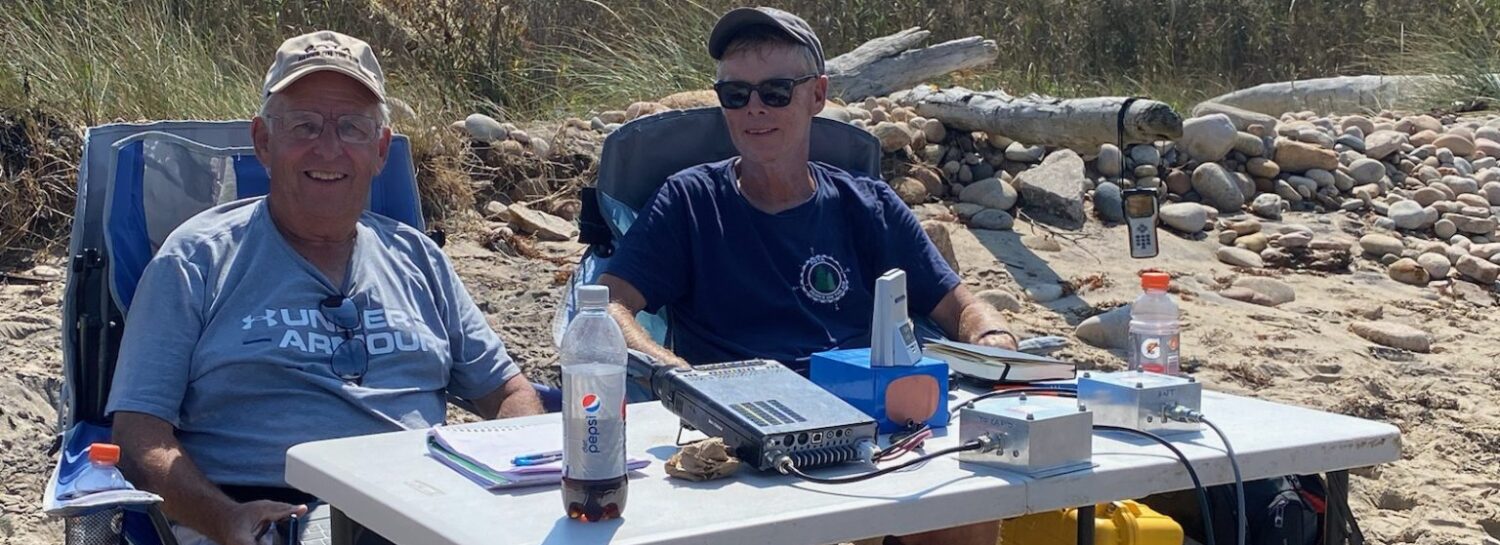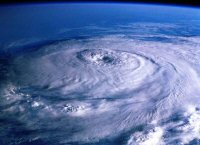Hello to all….
The following is a first draft of the Eastern Massachusetts ARES SET Drill documentation. An additional one to two updates will be posted over the next week and a half to update how the exercise will be controlled and defined and to add additional players as they commit to the drill. Please let me know if you have any questions or concerns. Below is the drill documentation:
Date and Timeframe of Exercise
Saturday November 12th, 2005
Start Time 10 AM
End Time: 1 PM
Duration: 3 Hours
Please allow time for setup and take down of any equipment during this exercise.
Purpose and Scenario
Eastern Massachusetts ARES will conduct the national ARRL SET or Simulated Emergency Test on Saturday November 12th, 2005 from 10 AM-1 PM. The scenario will be as follows:
A winter of weather extremes with several unusually strong nor’easters as caused significant issues to the power grid in the Northeast United States. These storms along with the fact that the grid has been damaged have led to roving power outages across the section that in this situation cascaded into widespread power outages across the region. Power may not be restored for a 24-48 hour period. The long period of time in restoring power is being caused by the extent of damage to the grid and the fact that a contagious illness has caused enough sickness within the region that utility companies do not have the resources to fix the issue in a more timely fashion and are unable to draw upon resources from other regions to fix the issues for fear of the contagious illness.
The purpose of this drill will be the following:
Local ARES team coordination and deployment as well as local NTS and tactical message handling.
Intra district and interdistrict tactical and formal message handling.
Utilization of HF, VHF, UHF, Packet, IRLP and EchoLink modes of communication. This includes utilization of SKYWARN frequencies as required to fill the gap of local ARES frequencies and SKYWARN frequencies.
Utilization of EOC or Simulated EOC’s at various points across the section and interfacing with other EOC’s, Simulated EOC’s in other sections where appropriate.
Utilization of the New England Network integrated conference server, which is the EchoLink *NEW-ENG* conference node and IRLP Reflector 9058 as a command net for communications within the section and outside the section.
For this exercise, it is expected that all ARES DEC’s/EC’s, or their designee will support this drill and what is to be exercised. Those SKYWARN liaisons that also perform ARES/RACES are also asked to participate. As always, at the local level, message handling and formation is critical and keeping Hams at the local level busy must occur. Be creative and at the same time be realistic. The Eastern Massachusetts ARES leadership will inject message traffic into the system in an attempt to get responses from those participating. This is in the hopes to generate more traffic and release the burden from the individual Amateur to have to create a message on their own. Instead, they will be expected to be able to respond to traffic that is sent to them. Net Controls are asked to use their discretion in doing call-ups and to be prepared for the ARES leadership to pass traffic of tactical and formal nature to each net. Amateurs are asked to then build tactical messages and formal messages in response to this traffic as required. For this drill, the Eastern Massachusetts ARES SEC will be located at the Southeast Massachusetts Amateur Radio Association Club in South Dartmouth Massachusetts, performing his duties as ARES SEC and other duties to support operations as required.
Exercise Control Team
The exercise will be controlled and walked through the scenario by the SM, SEC, and DEC’s or the staff will assign a designee to walk through the scenario on the air. This will be done through a series of tactical message announcements. Also, as stated previously, the staff will be injecting NTS traffic messages along with tactical message announcements on the air in an attempt to get responses from people on the air. This will make it easier to have more message traffic during the course of the exercise and should allow for easier play by those participating.
Exercise Objectives
The objectives of this exercise are as follows:
· Have all teams have one liaison that monitors their local RACES Repeater in addition to their local operations.
· ARES teams willing to deploy away teams are asked to do so where possible provided benign weather conditions on the drill date.
· Establish district wide communication utilizing the following modes:
o IRLP and/or EchoLink nodes.
o Utilizing the integrated EchoLink *NEW-ENG* Conference Node (Node #9123) and IRLP reflector 9058 as a command net for contact with the Eastern Massachusetts section and surrounding areas.
o Utilizing Various 2 Meter Repeaters that the ARES teams will be utilizing in the area when necessary.
o Utilizing SKYWARN frequencies as an additional backbone as needed to ARES and RACES infrastructure.
o Utilize RACES frequencies where active for support in the drill along with local ARES and SKYWARN frequencies.
· Establish contact with other ARES districts and EOC’s/Simulated EOC via HF (3943 and/or 7245 KHz depending on band conditions).
· Test and evaluate the range of Home stations for relay operations.
· Amateurs are encouraged to test their backup power equipment wherever possible.
· Having mobile “roving” Amateurs wherever possible.
· Practice sending many test NTS messages.
· Practice sending many test tactical messages.
· Practice sending traffic between the ARES members within each ARES team.
· Practice sending traffic between EOC’s within the Eastern Massachusetts section.
· Practice sending traffic to the Western Massachusetts section ARES/RACES/SKYWARN personnel where appropriate.
· Assure MARS Liaisons have a way to gather ARES reports to formulate into EEI’s (Essential Elements of Information).
Operational Ground Rules
The following are some operational ground rules for this exercise:
All communications options should be utilized. EC’s may throw in “failures” to test out “failover” of communications wherever possible as long as they are properly communicated up and down the ARES leadership.
Many messages of both a tactical and NTS formal nature should be sent within the teams participating, between teams and between districts wherever possible.
Frequent usage of the phrase “This is a Drill” should be incorporated with any messages, traffic or announcements relating to the drill.
Operational Players
The following is a list of agencies and a general list of EOC’s that will be playing in the exercise.
Various EOC’s and Simulated EOC’s
There will be various city/town EOC’s, Red Cross Chapters and simulated EOC’s participating in the exercise. If enough of them become known, the document will be updated to provide a short listing.
SEMARA: Southeast Massachusetts Amateur Radio Association (W1AEC)
The club station will be active for this exercise staffed by Amateurs from the Southeast Massachusetts Amateur Radio Association and the club’s ARES group known as SEMARA-ARES. This station will act as one of the key hubs for the region.
Town of Bridgewater EOC serving as the ARES Command Center:
The town of Bridgewater EOC will serve as an ARES Command Center as done in previous drills and exercises as well as real events. The EOC will monitor several 2 Meter frequencies, 6 Meter Mount Wachusett and possibly HF. They will act as a key control point in the drill.
Home Stations
We encourage home stations across the Eastern Massachusetts section to monitor and check into nets across Eastern Massachusetts district for ARES assistance. Some home stations can act as “simulated EOC’s” or net controls where appropriate. We encourage stations to generate tactical message traffic and formal message traffic for ARES where possible.
Mobile Stations
Mobile stations are encouraged to participate utilizing all modes at their disposal and can be utilized as roving stations and can report conditions that they might see if a real hurricane is occurring from their mobile station. We encourage stations to generate tactical message traffic for SKYWARN and formal message traffic for ARES where possible.
Other Drills Taking Place Saturday and Potential additional participants in our drill:
SET drills will be taking place in New Hampshire, Vermont and Western Massachusetts. Western Massachusetts may communicate information from a SKYWARN perspective in their drill scenario through EchoLink/IRLP and HF. Amateurs from Rhode Island may participate directly in our exercise as well and we will include them in the operation. Those wishing to attempt to make contact on the New Hampshire exercise can try 147.42 simplex as New Hampshire is conducting their drill entirely on simplex.
Amateur Radio Frequency Plan
The frequency plan will utilize existing SKYWARN and RACES repeaters that are well documented via the web. The following links detail these frequencies:
SKYWARN Frequencies:
http://users.rcn.com/rmacedo/freq.htm
RACES/Simplex Frequencies:
http://ares.ema.arrl.org/mod.php?mod=userpage&menu=1804&page_id=9
Please note that the SKYWARN Frequencies are more up to date on the first link.
It is noted that IRLP and EchoLink nodes maybe connected either to the *NEW-ENG* Conference node or IRLP Reflector 9058. This will again serve as a command net for communications within the Eastern Massachusetts ARES section and for stations outside the section that wish to participate. Individual Hams are welcome to listen and if they have no other means to pass their information, they can pass it over this system as needed.
The following additional frequencies will be utilized during the drill in the Southeast Massachusetts district:
SEMARA ARES Response Team Frequency:
147.000-Dartmouth Repeater
Fall River (BCRA) ARES/RACES Team Frequency:
145.15-Fall River Repeater PL: 123.0 Hz.
The MMRA Repeater System will potentially be linked up as needed during portions of or during the entire drill time period and we will attempt to have a Net Control monitoring the system full-time and facilitate traffic at a section level for Eastern Massachusetts. Below is the link for the frequencies that can be linked up utilizing the MMRA System:
http://www.mmra.org
The following are important regional frequencies via HF for this drill:
Regional ARES/RACES Net Primary for this drill:
3943 KHz LSB
Regional ARES/RACES Net Secondary for this drill:
7245 KHz LSB
There are additional local frequencies that maybe utilized in this drill at your local town/city level or at a regional level. Please contact your ARES DEC or EC for further information on additional frequencies that maybe utilized in your specific area during the drill.
Respectfully Submitted,
Robert Macedo (KD1CY)
ARES SKYWARN Coordinator
Eastern Massachusetts ARES Section Emergency Coordinator
Pager #: (508) 354-3142
Home Phone #: (508) 994-1875 (After 6 PM)
Home/Data #: (508) 997-4503 (After 6 PM)
Work Phone #: 1-800-445-2588 Ext.: 72929 (8 AM-5 PM)
Email Address: rmacedo@rcn.com
http://users.rcn.com/rmacedo
1



 Eastern MA ARES and SKYWARN members received a nice write-up on the ARRL national website describing their efforts in the wake of last week’s nor’easter in which “near-blizzard conditions and high winds” prompted ARES and SKYWARN teams to activate in Eastern Massachusetts on December 9.
Eastern MA ARES and SKYWARN members received a nice write-up on the ARRL national website describing their efforts in the wake of last week’s nor’easter in which “near-blizzard conditions and high winds” prompted ARES and SKYWARN teams to activate in Eastern Massachusetts on December 9.
 Eastern MA ARES and SKYWARN members received a nice write-up on the ARRL national website describing their efforts in the wake of last week’s nor’easter in which “near-blizzard conditions and high winds” prompted ARES and SKYWARN teams to activate in Eastern Massachusetts on December 9.
Eastern MA ARES and SKYWARN members received a nice write-up on the ARRL national website describing their efforts in the wake of last week’s nor’easter in which “near-blizzard conditions and high winds” prompted ARES and SKYWARN teams to activate in Eastern Massachusetts on December 9.  At this time, Hurricane Katrina evacuees are being housed in our section, and there is a genuine possibility that some EMA ARES personnel may be called upon to deploy to the Gulf Coast. We remind our readers to watch for local news updates and disaster coordination messages on the Eastern MA ARES web site at
At this time, Hurricane Katrina evacuees are being housed in our section, and there is a genuine possibility that some EMA ARES personnel may be called upon to deploy to the Gulf Coast. We remind our readers to watch for local news updates and disaster coordination messages on the Eastern MA ARES web site at